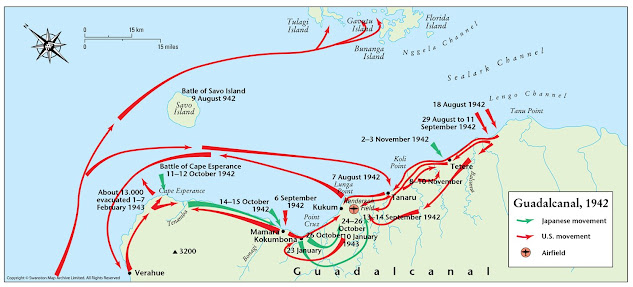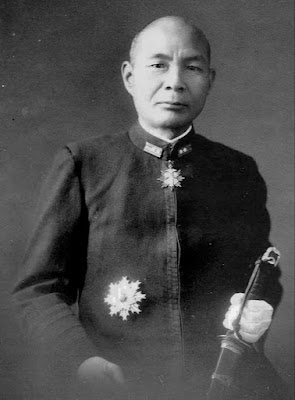Beneath the Waves: Thomas Eadie and the Tragedy of S-4
 |
| Blueprint of USS S-4 |
On
the afternoon of Saturday, December 18, 1927, off the coast of Provincetown, Massachusetts, U.S. Coast Guard Cutter USCGC Paulding (CG 17) was on routine patrol. With the passing
of the 18th Amendment in 1919, which prohibited the manufacture,
sale, transportation and consumption of alcohol, Paulding’s crew was
tasked with intercepting and searching private ships off the coast of New
England. Commanded by Lieutenant
Commander John S. Baylis, the destroyer was on the lookout for approximately
three hundred vessels in the area suspected of smuggling illicit alcohol or
‘rum running’ as it was known at the time.
Paulding was built as a destroyer for the Navy, but it was redesignated
as a cutter after being transferred to the Coast Guard.
 |
| USCGC Paulding (CGC 17) |
Unbeknownst
to Baylis and his crew, a U.S. Navy S-class submarine was conducting diving
tests off Cape Cod and was submerged directly in the path of Paulding. USS S-4 had aboard thirty-nine sailors
and a single civilian observer. A lack
of formal communication procedures between the Navy and the Coast Guard at this time contributed to
the catastrophe. Baylis was not aware
that he was on a direct course to collide with a Navy S-class submarine.
S-4 was
not visible to those aboard Paulding until it was seventy-five yards
off its port bow, initially mistaking its periscope as a fisherman marker. The submarine was stationary due to a
suspected engine malfunction. Miscommunication
and the poor visibility prevented Paulding’s crew from avoiding a
collision with the S-class submarine. At
3:50 PM, the cutter rammed the starboard side of S-4 immediately
sinking the submarine. Time was of the
essence as S-4 possessed oxygen tanks meant to last forty hours. The Navy then dispatched USS Lark which was spearheading salvage operations.
 |
| USS S-4 in the Boston Naval Shipyard |
Lark
located the sunken submarine at approximately one hundred feet. Chief Gunner's Mate Thomas Eadie dove into the rough and freezing waters to further investigate the wreckage. No
stranger to diving operations of this scale, Eadie had been awarded the Navy
Cross in 1925, for his involvement in the rescue and salvage of three men
aboard USS S-51 off the coast of Block Island. Eadie circled the wreckage tapping on the
exterior of the vessel with a hammer to indicate to any survivors that help had
arrived. It was not until he had probed
the exterior of the bow that he heard a response. Those trapped within S-4 responded
with six slow taps suggesting that there remained six survivors trapped within
the torpedo room.
 |
| A naval diver preparing to salvage S-51 in 1925 |
Eadie
and the survivors communicated utilizing morse code in order to gain a better
understanding of the survivors’ situation.
By the time Eadie surfaced, USS Falcon had arrived with hopes of establishing an airline to pump
much needed oxygen into the vessel.
Fellow diver Fred G. Michels was tasked with returning to the wreckage
to connect the airline. Arriving at the
site, Michels’ life-tether and hose had entangled itself in the
wreck. Michels was pinned down against
the top of the sunken submarine and required assistance to free himself from
the wreckage.
Against
protocol, Eadie volunteered to recover Michels without utilizing the
decompression chambers aboard Falcon. For nearly two hours, Michels was trapped one
hundred feet down until Eadie managed to reach him. With hacksaw in hand, for forty-five minutes
Eadie cut away at the metal of S-4 to free Michels who was beginning to
lose consciousness. In his attempt to
free his fellow diver, Eadie’s suit had been ripped and begun to take on
water. Fortunately, his helmet was
designed so that it was sealed off from the rest of his diving gear, yet he was
no longer insulated from the thirty-four-degree water. Both Michels and Eadie were successfully
brought aboard Falcon.
Another
attempt was made by diver William J. Carr who was able to attach the airline to
the sunken submarine. However, the rough
waters had made it ineffective, and all attempts made to rescue the six men
trapped in the torpedo room were unsuccessful. S-4 had become a coffin for the thirty-nine sailors and
single civilian observer aboard. This
tragic incident forced both the Navy and Coast Guard to improve channels of communication
regarding maritime operations and update aids to navigation in an
effort to prevent another tragedy of this scale from ever occurring.
 |
| Eadie receiving the Congressional Medal of Honor from President Calvin Coolidge |
All three divers: Eadie, Michels and Carr, were awarded the Navy Cross for their daring effort to save those trapped in the torpedo room. As a result of his heroism and unwavering courage to risk his own life in saving Michels, Eadie in February 1928 was awarded the Congressional Medal of Honor presented to him by President Calvin Coolidge. One month later, S-4 was raised and tugged to Boston Naval Shipyard, where it would later be repurposed to train future navy salvage divers. In 1929, Eadie published a memoir named I Like Diving: A Professional’s Story retelling his experiences as a deep-sea naval diver and salvaging both USS S-51 in 1925 and USS S-4.
By Brayden Schuster
7 February, 2025
Sources:
https://www.usni.org/magazines/naval-history-magazine/2021/april/anatomy-tragedy-sinking-uss-s-4
https://www.navsource.org/archives/08/pdf/0829290.pdf
https://archive.org/details/ilikedivingprofe00eadi/page/190/mode/2up


Comments
Post a Comment